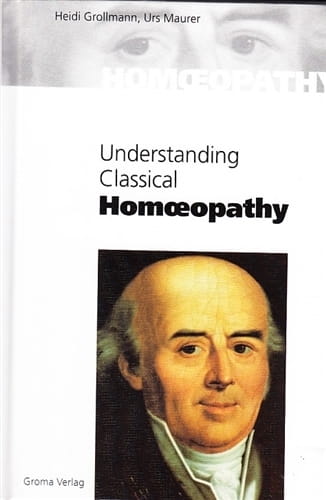Reprinted with the permission of The Homeopathic Links Journal, Volume 17, Summer 2004. Reviewed by Annette Gamblin, UK.
This beautifully produced pocket sized book was written by two Swiss homeopaths (who teach and practice classical homeopathy), having sold well over 15.000 copies in its original German text. Their aim was to produce a book for patients, who, through reading it, could gain a better understanding of classical homoeopathy.
I myself fully agree that the 'education of the patient' is very important. The more our patients understand, the more they can participate in the process. The more they become aware of the process, the more they can take responsibility for their own healing path and the clearer they will begin to express their state and their susceptibilities to us. All we then have to do is to connect these expressions to that similar image of the most appropriate remedy.
I really looked forward to reading this book!
The book is divided into 23 small, accessible sections with separate headings. The first four gave a brief biography of Hahnemann and introduce the concepts of similars, the vital force (although I would debate the term 'superior' energy), individual susceptibility, causation, totality and disease. This was achieved in just eight short pages, quite a feat!
To illustrate the holistic nature, there is a little diagram of three intersecting circles, entitled 'body', 'spirit' and 'soul'. The sentence underneath reads: 'Homeopathy views people as a unity of body, mind and spirit'. Not only is this confusing as it does not tally with the headings of the circles, but I also feel that the notion of 'soul and spirit' is something to be discussed on a much deeper level than is possible in a book for patients. Personally I would have kept to a notion of balance between body, mind and emotions. (There is a very good clarification of the concepts of 'spirit' and 'soul' according to the philosophy of Hahnemann's day in the glossary of Wenda Brewster O'Reilly's 'Organon of the Medical Art'.) Our contemporary understanding of 'soul' varies greatly, just as it has done throughout the history of philosophy and religion. However, there is a very nice and simple comparison between homeopathy and orthodox medicine, which in a way sums up the previous pages.
The next four sections discuss homeopathic pharmacy, potency, dosage and the concept of the single dose, using easily comprehensible analogies to illustrate various points. This is succeeded by a discussion of the concepts of acute and chronic, with an in-depth discussion of 'miasms'. The authors state in their introduction that they expanded on this chapter in their fourth edition due to numerous requests. Although very well written, I again find this to be a question of appropriateness of level. Is it targeting patients who want to understand the process of homeopathic treatment better or people who might be considering a further study of homeopathy?
The next section tries to address the limitations of homeopathy, but the title 'incurable disease' sits very uncomfortably with me, and it opens a completely new debate of what 'cure' actually means. This does not get discussed to some degree, but in my mind an incurable case is simply one where the vital force is no longer able to bounce back or respond to a similar remedy for whatever reason (e.g. due to suppression, extremely low vitality, etc). Do irreversible symptoms or conditions, as is suggested here, constitute an incurable case?
The next two sections discuss the 'healing process', including aggravation and direction of cure, which are of course of paramount importance for our patients to understand. I found this very well handled. The authors also touch upon another important aspect of the treatment, namely the expectations of the patient, which I call the dilemma of the 'quick fix' versus 'the process'.
'Suppression' on the other hand, is the area where we cross paths with conventional medicine and face many fears in our patients. My own vision of homeopathy is pretty uncompromising in terms of its basic philosophy, yet contains the idea of integrated health. How were the authors going to address this issue? What I found was a nice, simple explanation followed by case examples for the incidents of orthodox and homeopathic suppression. However the issue, of where this leaves the patient in terms of their conventional treatment, is not addressed.
The remainder of the book seems to be more informative. There is a list of facts we need in the consultation followed by several short chapters entitled 'the constitutional treatment' (really just a reminder of holistic and chronic treatment), 'homeopathy during pregnancy', 'homeopathy for children', 'homeopathy in sport' and finally 'how to take your remedy'.
The book ends with a few FAQ and the mention of two homeopathic pharmacies (in the UK) and the translator advertising himself for first aid kits and courses. It might have been nice, in addition, to have a reference to our professional bodies and some colleges for training. (Is the book aimed at the UK market only?)
It is a great achievement to write a book that is so readable and accessible to the lay person. My only criticism is that the level, (somewhere between that of the patient and that of the beginning-of-the-first-year student), could still be fine-tuned to the needs of the patient to understand.
Although a German native speaker, I have not read this book in its original. I am left with the suspicion that the occasional expression has lost something in translation. For example, the before-mentioned term 'superior energy' may have been translated from the German 'iibergeordnet', which has a connotation of hierarchy, rather than supremacy. But overall the translator has succeeded in making the book very accessible and easy to read. I will happily recommend it to my patients!

